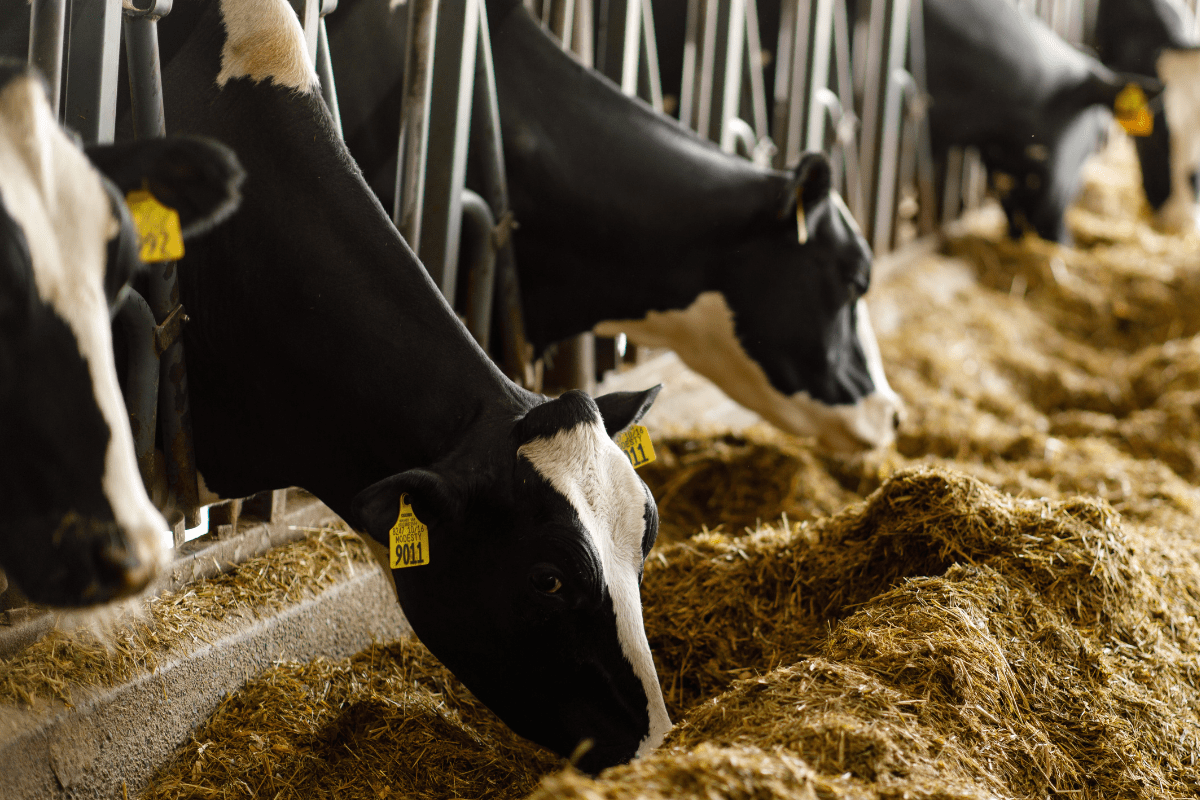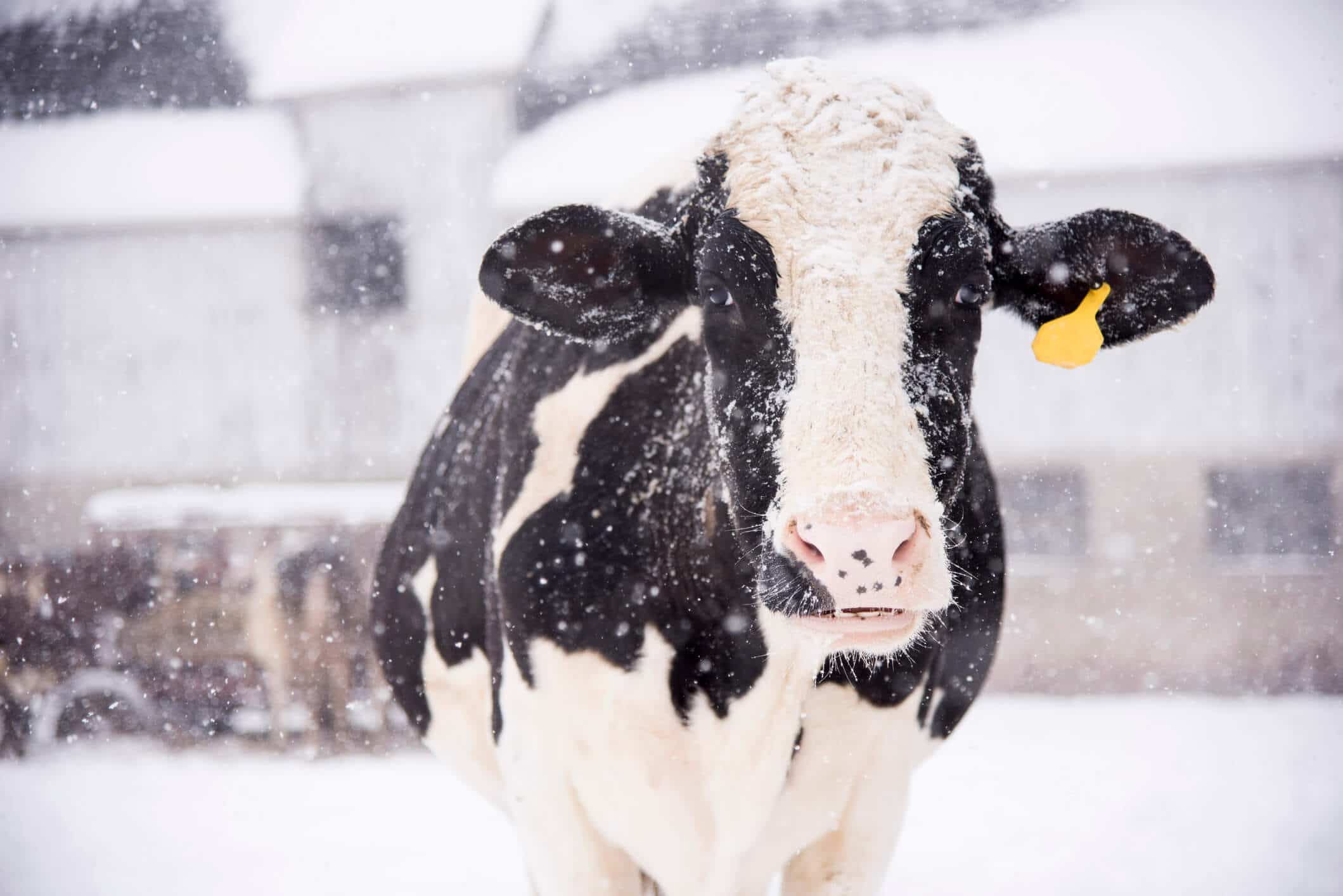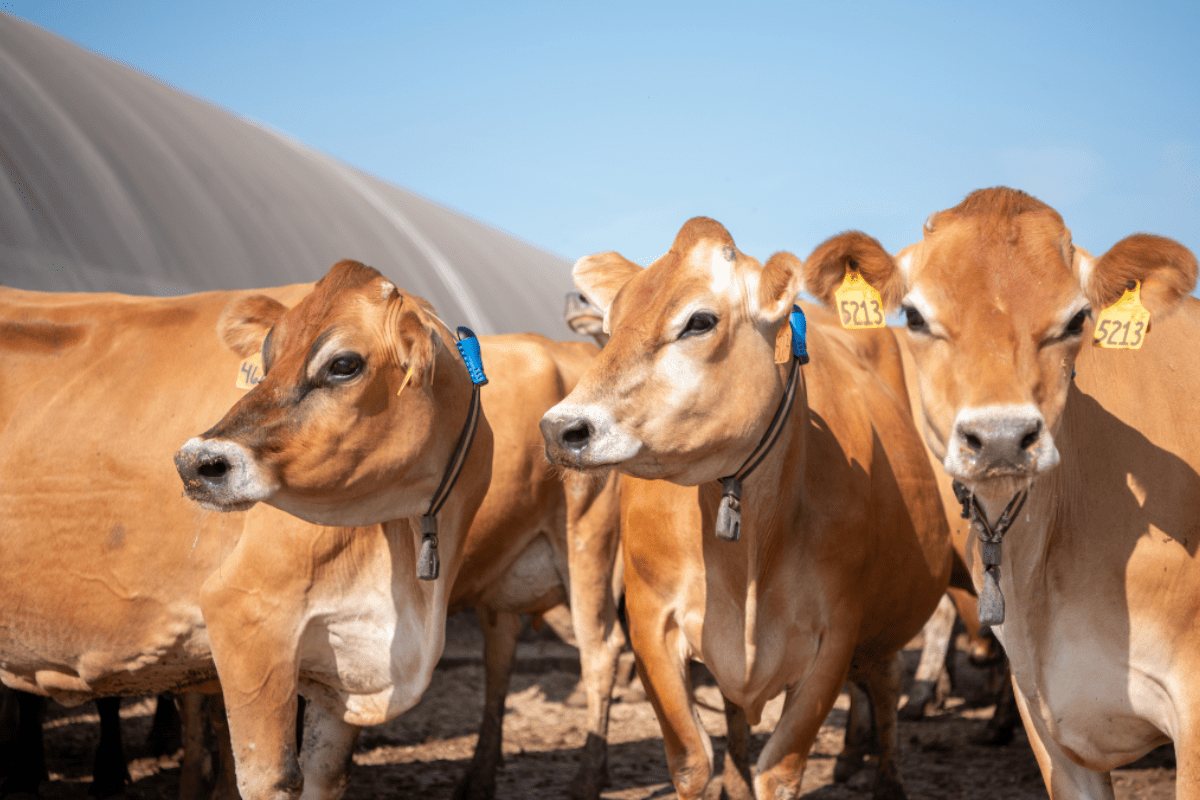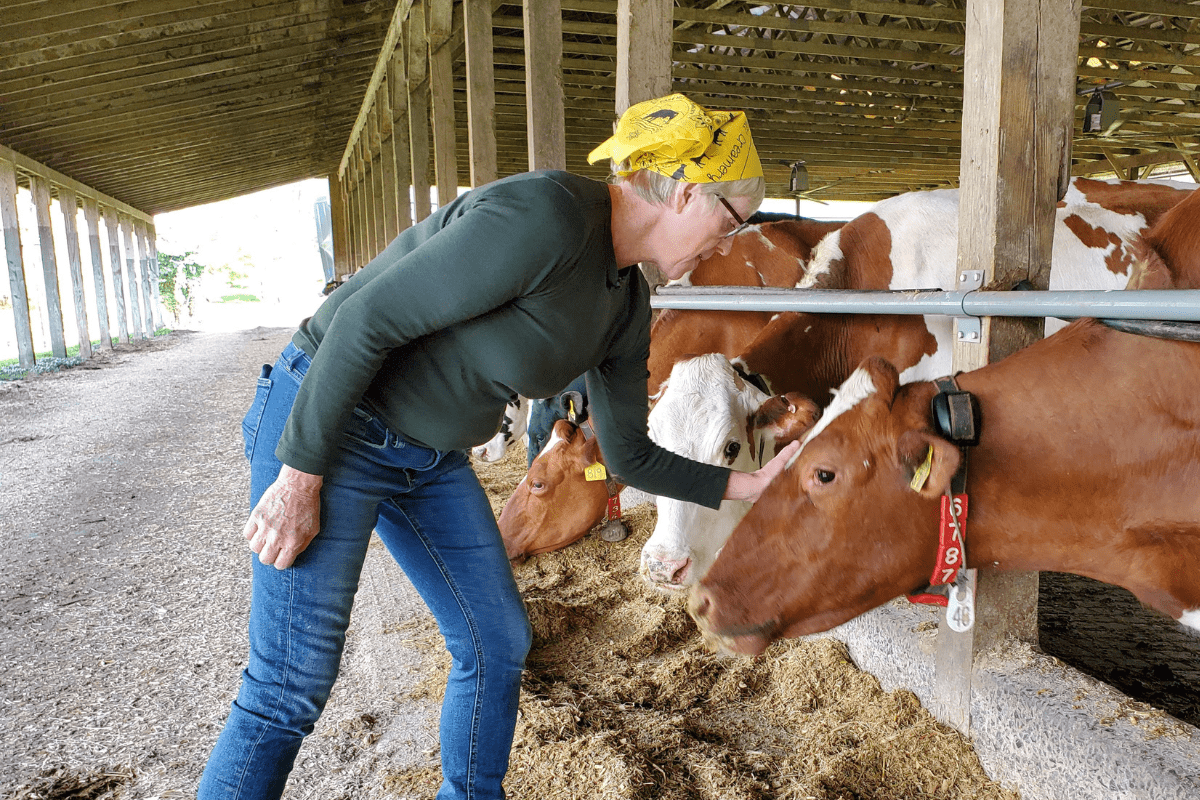While hundreds of families around the State would normally be camping out at the Fairgrounds and getting their cows ready for competitions, we’ll take you to 3 NY dairy farms and learn a little about different cow breeds and what goes into getting them ready for shows.
Full Transcript:
On behalf of dairy farmers and American Dairy Association North East, I’d like to welcome you to our virtual 2020 New York State Fair. I’m Abbey Copenhaver my dairy farm is Ivy Lakes Dairy here in beautiful Stanley New York. The New York state fair is a celebration of New York’s agricultural industry and dairy is the largest part of that industry i invite you to join us here every weekday at 10 a.m. from now through next Tuesday, September 1st for a virtual state fair experience including the unveiling of the 2020 butter sculpture one of the most popular exhibits at the New York State Fair. Here’s a look at what we have planned.
Today we kick things off with the dairy barn virtual experience many dairy farm families look forward to the state fair to showcase their cows in the dairy cattle competitions and give you an opportunity to see these beautiful animals up close let’s visit three dairy farms to see how we care for our cows how we get them ready for competition and learn a little bit about different breeds of cows.
Hi my name is Chloe Lamb and my name is Claire Lamb and today we are our family’s dairy farm Lamb Farms in Oakville, New York. Every day we care for 4,000 cows and calves I like helping out with the calves I like helping out with the calves too (I also like helping out with the kittens!) we are going to learn about washing a calf my calf is named mocha and she is a black red Holstein and she has a special trait where her fur changed from red to black.
my calf’s name is rose bud and she is a red and white Holstein so the first thing that you will need is water the second thing that you will need is a bucket and then the third thing that you will need is some orvis shampoo the fourth thing that you will need is some of this coat conditioner then you will need some conditioner and the last thing that you will need is a scrub brush we have two one for washing and one for scraping all the extra water off now the first thing that you do is put around a handful of orvis into your bucket and then the next thing that you will need to do is put your coat conditioner in your bucket and then you will need to put in some water so now that our soap is all mixed up we are going to rinse down our calves before we start scrubbing them and now we’re ready to scrub! and we’re gonna rinse all the soap off! thank you for joining us today to learn how to wash a cow if you have any questions drop them in the comments below. and when you’re on the wash rack, expect to get wet!
Hi welcome to Country Ayre Farms, we are a third generation family farm we milk 750 dairy cows my name is Madison Woodis and i enjoy working with the big herd and these are my sisters. My name is Sophie and I enjoy making sure all of our cows are content and happy. My name is Lily and I enjoy working with our show animals, My name is Evie and I enjoy playing with the little babies.
Today my sisters and I are gonna demonstrate how we clip a calf to get her ready for the show ring. You already saw how we wash your calf so first we let her dry out and then we get ready to clip her. First i want to talk to you about this breed of calf this calf is a Jersey calf her name is Nancy she’s about three months old we like to milk the Jerseys because they have higher protein and butter fat in their milk Jerseys are the smallest breed of cattle out of the seven major breeds when we clip our calves we try to clip them so that we can accentuate their assets and disguise their faults this helps us take them into the show ring looking their best for the judge. When we clip them we make sure that we blend everything in to the best that we can. So we begin with blowing up their top line so that it’s nice and tall. And now Sophie’s going to show us how we blow up the top line. Some calves have thicker hair for their top lines some have less and she’s a little tiny calf she probably isn’t going to have as much hair on her top line. Once that’s blown up we’re going to start body clipping, something we try to focus on is never stopping the clippers right on her body we try to always keep them moving so we don’t leave any sharp lines we use bigger clippers for the majority of her body just so we don’t waste time and we use these little clippers for her legs and her face just so that we can get around all the nooks and crannies.
As you can see we’re all done clipping her body we leave her top line kind of long so that it makes it straighter over her top line and we leave her belly longer so it also looks like she’s deeper and fuller in her belly now that we’ve clipped her whole body we’re going to use the little clippers to clip her legs her ears and her head we use a little clipper so that we can maneuver more easily around her bones and in her ears and around her pole now that she’s all clipped we’ll do some things to make the calf stand out to the judge we’ll put hairspray in her top line so that our top line stays up and we don’t have to worry about brushing it up while we’re in the ring we’ll put final bloom on which is a shiny spray that will make her shine and will accentuate her belly and we will fluff up her tail to give her a more complete look while she’s in the show ring.
thank you for being with us and watching us clip our calf before we go we wanted to share with you some of our favorite things about going to the show. My favorite thing is getting to see my friends that I don’t get to see very often. I love getting to see all the beautiful cows from all over the state. I love showing off my animal that I’ve worked so hard with all year. I love hanging out with my calves. Thank you! Bye
hi my name is Lily Marshman and today we’re at Marshman Farms Tiger Lily Holsteins, 430 cow dairy. I am the seventh generation here at Marshman Farms. Day to day, I do calf chores and manage the show string.
Today we’re gonna learn about how to show a cow. This is my cow Rowan and she was born September 14th and she’s a red and white Holstein. An interesting fact about red and white holsteins is its the same breed as the black and white Holsteins, just a different color. year round we manage her diet, wash her every day and groom her so she’s ready for the show season. We use a leather halter because it makes them look very clean and presentable through the head and neck we wear white to represent the cleanliness of the dairy industry now I’m going to show you how I lead my cow in the show ring I have my left hand up top by her head to control her and then we take small steps to make sure that the judge can see her while we’re walking around in a circle some of the questions that the judge might ask me in the show ring is how old she is or when her birthday was who her sire is or who her dad is it’s important for the judge to know when her birthday is so that he can decide if she’s small or big for the age that she was born.
I’ve been showing cows for as long as I can remember probably. I show at New York State Fair and other local and national shows. If the judge was on over there somewhere I would make sure that the back leg closest to the judge is farther back so it makes her look longer [cow moos] so it makes her look longer and then I put her front feet together. in a breed class the judge would be looking at their depth to her rib or how much rib she has and her feet and legs if they’re really straight and posty or really bendy my favorite part about showing cows is the actual showing part in the show ring thanks so much for joining me today and learning how to show a cow.
In addition to the three dairy breeds you just saw Holstein, Jersey and red and white, there are four other breeds of dairy cows: the brown Swiss are considered to be the oldest of the dairy breeds she has a gray brown coloring and originated in Switzerland the breed is noted for their docile and calm temperament.
Guernseys are brown or fawn with white spots of various sizes on their body or face her milk has a golden color hue due to the high content of beta carotene and also has high amounts of butter fat and protein. The Guernsey originated from the Isle of Guernsey, a tiny island in the English Channel.
Ayrshires have reddish brown and white bodies the breed originated from the Country of Ayr in Scotland this Scottish breed debuted in the United States in 1822 when they were imported to Connecticut. the climate and terrain in the northeast is similar to that of scotland and Ayrshires do very well in this environment. Shorthorns were first introduced in the united states in 1783 in Virginia and became a very popular breed for the settlers because of the cattle’s versatility and calm disposition.
To our farm kids please post photos of your show cows with the hashtag #Ilovecows and why and if you follow American Dairy Association North East’s Facebook account, you can download a blue ribbon for your profile and to all of our friends please join us tomorrow for a butter sculpture sneak peek!




